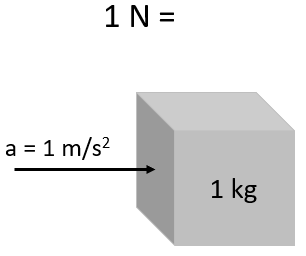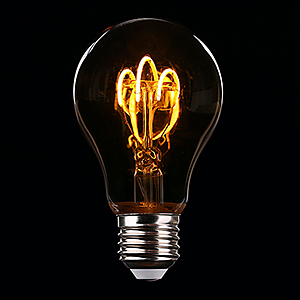Before we learn about kilowatts and kilowatt-hours, let’s get a jump start (pun intended ????) on what these terms mean.
The Units of Electrical Power
Note: If you are not a physics enthusiast and want to skip the calculations, you can jump to this section.
Let’s travel into our way back machine and go back to high school physics 101. These terms and measurements are for background purposes only. We will not be using them later on, but understanding these concepts can help you better comprehend how power (energy) is referenced in units of watts (w) and how they are calculated. Let’s do it!
Speed
The rate of time at which an object is moving along a path.
Units: Length, Time
Example: The car traveled 1 mile in 60 seconds or 1 mile/minute.
Further Reading: What is speed in physics?
Velocity
The rate of time at which an object is moving along a path in a particular direction.
Units: Length, Time, Direction. More precisely, length/time (speed) in a particular direction.
Example: The car traveled 1 mile/minute going west.
Further Reading: What is the difference between speed and velocity?
Acceleration
When we speak about acceleration, it is the rate at which the velocity changes. In other words, velocity doesn’t stay constant.
Units: Feet per second per second or feet/second squared.
Example: A plane traveling south accelerates from 550 m/h (mph) to 600 m/h over a time period of 40 seconds. It has a change in velocity from 550 m/h to 600 m/h and the time period that this occurs in 40 seconds.
Further Reading: Speed, velocity, and acceleration.
Newton
Here we add a new component – Force. When we talk about the measurements of Newtons, we are talking about an acceleration (remember, acceleration means just a change in velocity) of an object.

One newton is the force needed to accelerate one kilogram of mass at the rate of one meter per second squared in the direction of the applied force. Simply put, this is the amount of push (force) of one kilogram of an object that weighs one kilogram at a changing velocity (acceleration) of one meter per second per second.
Units: 1 kg⋅m/s2
Example: Joe is pushing a box weighing one kg down the road at 1 m/s2
Joule
Joules refer to the amount of work done. A joule is equal to the work done by a force of one newton moving one meter, so Joe has pushed the box weighing one kg down the road at 1 m/s squared for a distance of 1 meter. A joule is also referred to as energy.
Say Watt?
The number of Joules that an electrical device (e.g a lightbulb) is burning per second. Joules and watts both refer to work and equate to power, but both are interchangeable.
Here is the connection:
1 Watt = 1 Joule per second (1W = 1 J/s), so a watt is the amount of energy (in Joules) that an electrical device (such as a light) is running per second. So if a device is burning 500 watts for 60 seconds, then a Joule would equate to 500 * 60 = 30,000 J. Moving ahead, if an air conditioner is burning 1000 watts for 1 hour (60 sec * 60 min = 3600 seconds), then that equates to 1000 watts * 3600 seconds = 3,600,000 Joules (of energy that was used for that hour).
A kilowatt is equal to 1000 watts, so 1 kWh represents the amount of energy transfer that occurs over one hour from a power output of 1000 watts (i.e., joules per second). Thus 1 kWh is equal to 3,600,000 joules of energy transfer (work).
What Does This Mean?
It means that the work of one newton is being performed in the form of electrons that are being pushed through the wire per meter. Saying it in a simpler form, one watt is one joule of energy running a device per second.
Just Tell Me in Plain English What a Watt is!

Glad you asked. 1 watt is equal to voltage times current: W=EI (don’t worry, you don’t have to memorize this formula). Also known as power, a watt is a unit of power. The more the voltage and/or current that flows through the wire, the more power (watts) is used to run the device.
Let’s Talk About Time
Devices run for a period of time, right? So we have to add this value to our watt calculations. That way, we will know how many watts are used for a certain period of time, and as we will see later, this will help us determine what it costs to run electrical devices, or more specifically, what the electric company charges us and why.
Examples: Joe turned on a one-watt lightbulb for 60 seconds, so that is equal to 60 watts.
Now Joe turned on a 250-watt lightbulb for 2 minutes, so that is equal to (250 * 0.333 hours) = 83.25 watts.
(Remember, for you physics guys, 83.25 watts is the same as saying that 4995 joules of power have been generated).
We’ll be going into this in another article, but just to enlighten you, if your electric company charges you 14.34 cents per 1000 watts used per hour (that’s what they generally charge in New York), then, using the example above, you have paid the company 14.34 cents * (per 1000 watts) * 0.25 watts * 0.0333 / hour (2 minutes) = .036 cents per hour.
If Joe ran the 250-watt bulb for 1 hour, then he would be paying 3.6 cents per hour, but if Joe ran a 1000-watt device for 1 hour, he would be paying 14.34 cents.
OK, but if Joe ran the 1000 watt bulb for 10 hours, then he would owe the energy company $143 cents or $1.43.
OK forget about Joe. What if your electric company charges you 14.34 cents per hour for a 2000-watt air conditioner? You would be paying 29 cents per hour, so if you run the air conditioner for 10 hours each day, you would be paying $2.90 every day. That’s $29.00 every 10 days or close to $100 per month.
Say 1000 Watts!
Are you getting tired of hearing of thousands of watts? This author is also, so let’s call 1000 watts – 1 kilowatt. There you go. Kilo means 1000 so 1kw is 1000 watts.
If you run a 1000-watt device for 1 hour, then the designation is 1Kwh (1 kilowatt-hour or you can say a 1-kilowatt device is running for one hour), denoted as kWh. So, 1 kilowatt is equal to 1,000 watts. If a unit consumes 60 watts hourly and runs for 60 hours, then the energy consumption rate will be 60 watts x 60 hours to equal 3,600 watts per hour, which is equal to 3.6 kWh of electricity.
Ok we know, you want to know what it cost to run your electrical devices in your home and you probably want to know about your air conditioner for starters. Let’s just say that a typical air conditioner runs about 3 kWh per day. To calculate how much that costs you, just call your local energy company to get the correct number. For our area, Nassau County, the cost is 7 cents per kWh. If you want to know more about your air conditioner costs, check it out here.
